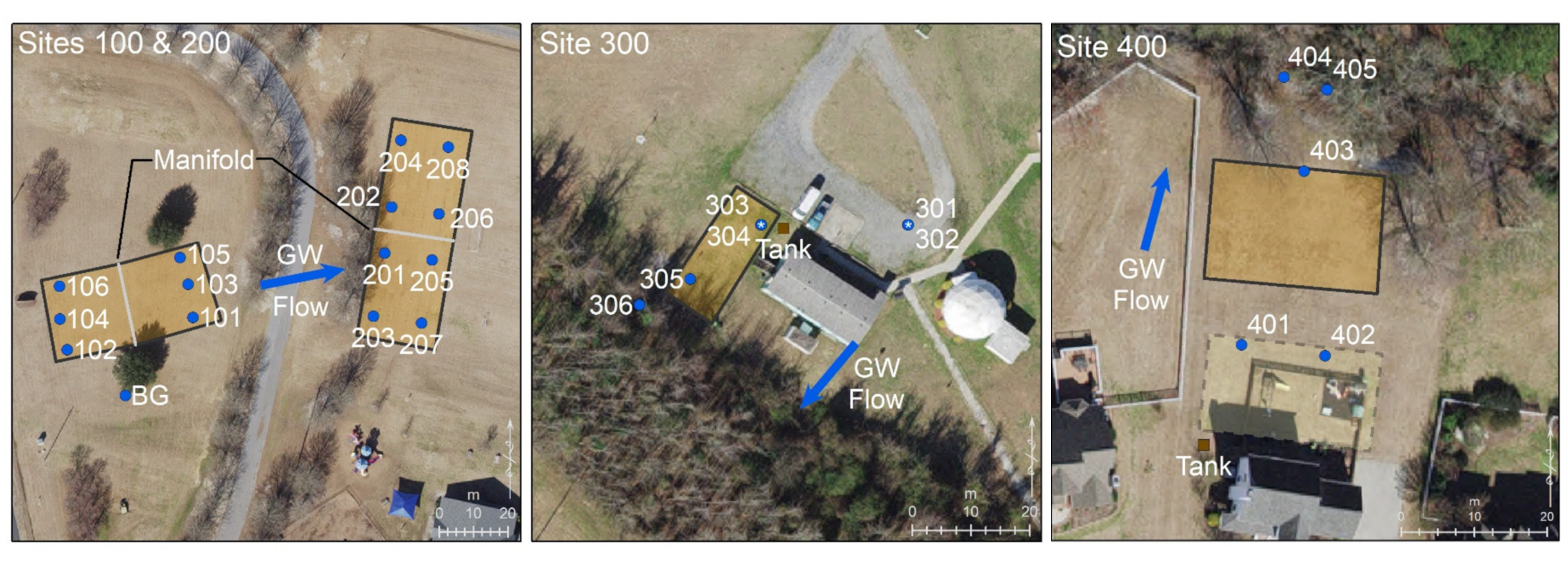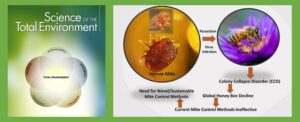Humphrey C, O’Driscoll M and Iverson G (2021). Comparison of Nitrogen Treatment by Four Onsite Wastewater Systems in Nutrient-Sensitive Watersheds of the North Carolina Coastal Plain. Nitrogen 2(2): 268-286. doi:10.3390/nitrogen2020018
Abstract
Wastewater may be a source of nitrogen (N) to groundwater and surface waters if not effectively treated. In North Carolina, onsite wastewater systems (OWSs) are used by 50% of the population for wastewater treatment, but most OWSs are not routinely monitored. There is a lack of information regarding the N contributions from OWSs to water resources. Four sites with OWSs were instrumented with groundwater wells near their drainfield trenches to compare N concentrations in groundwater to concentrations in wastewater and to determine the N treatment efficiency of the systems. Two OWSs (Site 200 and 300) were less than 1 year old, and two (Site 100 and 400) were more than 10 years old at the start of the study. Two OWSs (Site 100 and 200) used pressure dosing, while two OWSs (Site 300 and 400) used gravity distribution. The mean N treatment efficiency of the four OWSs was 77%. The new OWSs were more efficient (92%) relative to the older OWSs (62%) at reducing N concentrations. Similar N treatment efficiencies were observed when pooling data for the pressure dosed (77%) and gravity (79%) OWSs. Each OWS influenced groundwater by causing increases in N concentrations. It is important that new OWSs are installed at a shallow depth and with sufficient separation to groundwater to promote the aerobic treatment of wastewater. Remediation strategies including the installation of permeable reactive barriers or the use of media filters may be needed in some areas to reduce N transport from existing OWS.



